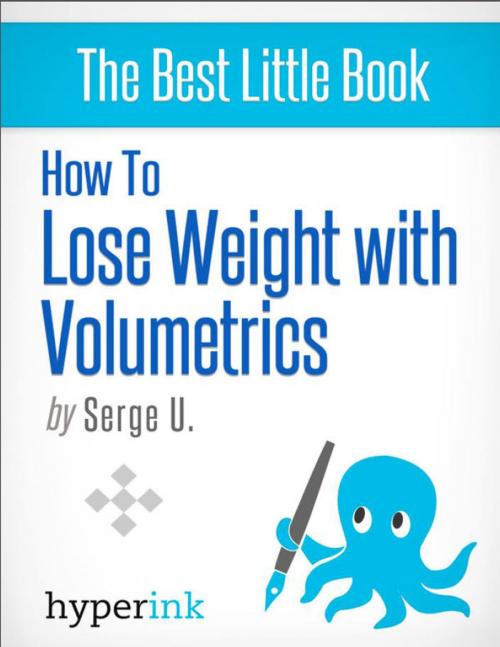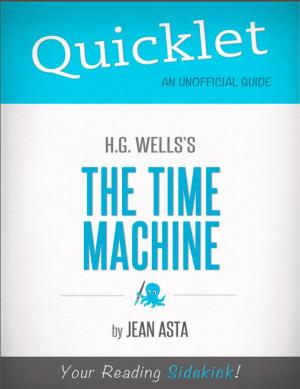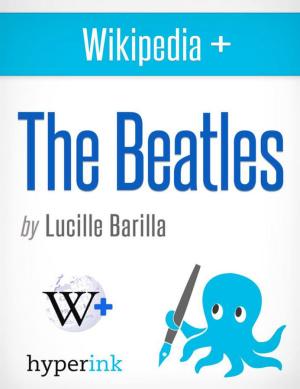How to Lose Weight with Volumetrics (Setting Up a Volumetric Eating Plan)
Nonfiction, Reference & Language, Reference, Health & Well Being, Health| Author: | Serge Uri | ISBN: | 9781614645641 |
| Publisher: | Hyperink | Publication: | March 12, 2012 |
| Imprint: | Hyperink | Language: | English |
| Author: | Serge Uri |
| ISBN: | 9781614645641 |
| Publisher: | Hyperink |
| Publication: | March 12, 2012 |
| Imprint: | Hyperink |
| Language: | English |
ABOUT THE BOOK
People who want to lose weight are frequently overwhelmed by the large number of diets, exercise routines, nutritional supplements or certain equipment that are available on the market and online. Additionally, one may feel that counting calories or reading nutritional value labels on food packages is an endless task, and decreases their motivation to succeed.
Barbara Rolls, an accomplished nutrition professor at Penn State University recognized the need for a well-structured, comprehensive and easy-to-understand approach to weight loss and healthy nutrition.
She designed a great weight loss diet called Volumetrics that eliminates the need to count calories, which lowers stress levels, enhances a one's self-confidence and provides several nutritional principles that may be applied immediately. These principles do not require extensive preparation or reading.
EXCERPT FROM THE BOOK
The reason why energy density and food volume are important when it comes to weight loss is because of our digestive system physiology and the regulation of appetite. The brain centers which are responsible for appetite and food intake receive continuous feedback from certain nervous receptors located in the stomach walls.
These nerve endings do not effectively react to food composition, but they do respond to food volume. This means that stomach receptors do not distinguish between a certain volume of potatoes or the same volume of cheese. Obviously, cheese contains more fat and thus more calories. However, your brain has no way of knowing the energetic density of cheese, it receives data only about its volume. When we eat and food reaches our stomach, the nerve receptors are stimulated by the stretch of stomach walls, which depends on pressure created by food volume. The stomach is abundant in nerves, which send nervous signals to brain centers that regulate appetite and food intake. When pressure created by food volume reaches a certain threshold, the brain sends inhibitory signals that decrease the appetite and reduce the food intake. This translates into a sensation of satiety and disappearance of hunger.
Dr. Rolls believes that increasing the consumption of foods with very low and low energy density allows a person to limit the amount of calories and lose weight without the need to monitor calories and perform various calculations. The author illustrates the relationship between dietary energy density and energy intake in a 2009 research study conducted at the Department of Nutritional Sciences, Pennsylvania State University. This makes the Volumetrics diet easy to apply into daily nutrition by putting the advice into practice quickly and effectively...
Buy a copy to keep reading!
CHAPTER OUTLINE
How to Lose Weight with Volumetrics
+ Introduction
+ Why Is Weight Management Important?
+ What is Energy Density of Foods?
+ How Does The Volumetrics Diet Work?
+ ...and much more
ABOUT THE BOOK
People who want to lose weight are frequently overwhelmed by the large number of diets, exercise routines, nutritional supplements or certain equipment that are available on the market and online. Additionally, one may feel that counting calories or reading nutritional value labels on food packages is an endless task, and decreases their motivation to succeed.
Barbara Rolls, an accomplished nutrition professor at Penn State University recognized the need for a well-structured, comprehensive and easy-to-understand approach to weight loss and healthy nutrition.
She designed a great weight loss diet called Volumetrics that eliminates the need to count calories, which lowers stress levels, enhances a one's self-confidence and provides several nutritional principles that may be applied immediately. These principles do not require extensive preparation or reading.
EXCERPT FROM THE BOOK
The reason why energy density and food volume are important when it comes to weight loss is because of our digestive system physiology and the regulation of appetite. The brain centers which are responsible for appetite and food intake receive continuous feedback from certain nervous receptors located in the stomach walls.
These nerve endings do not effectively react to food composition, but they do respond to food volume. This means that stomach receptors do not distinguish between a certain volume of potatoes or the same volume of cheese. Obviously, cheese contains more fat and thus more calories. However, your brain has no way of knowing the energetic density of cheese, it receives data only about its volume. When we eat and food reaches our stomach, the nerve receptors are stimulated by the stretch of stomach walls, which depends on pressure created by food volume. The stomach is abundant in nerves, which send nervous signals to brain centers that regulate appetite and food intake. When pressure created by food volume reaches a certain threshold, the brain sends inhibitory signals that decrease the appetite and reduce the food intake. This translates into a sensation of satiety and disappearance of hunger.
Dr. Rolls believes that increasing the consumption of foods with very low and low energy density allows a person to limit the amount of calories and lose weight without the need to monitor calories and perform various calculations. The author illustrates the relationship between dietary energy density and energy intake in a 2009 research study conducted at the Department of Nutritional Sciences, Pennsylvania State University. This makes the Volumetrics diet easy to apply into daily nutrition by putting the advice into practice quickly and effectively...
Buy a copy to keep reading!
CHAPTER OUTLINE
How to Lose Weight with Volumetrics
+ Introduction
+ Why Is Weight Management Important?
+ What is Energy Density of Foods?
+ How Does The Volumetrics Diet Work?
+ ...and much more















